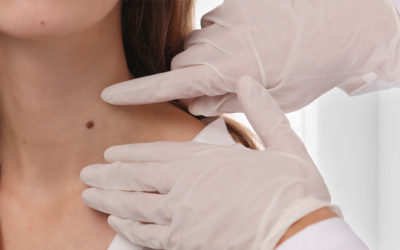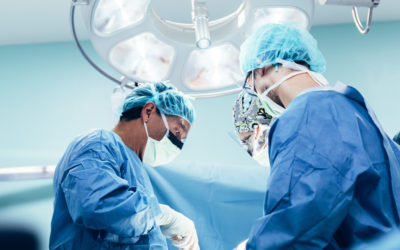Breast Cancer
Breast cancer can affect both women and men. However, women are at more risk. There are 200,000 new cases diagnosed each year. Family history can play a role in developing breast cancer. Screening for breast cancer with a mammogram typically begins at the age of 40. Surgery is a common treatment for breast cancer, and its main purpose is to remove as much of the cancer as possible. There are two main types of surgery to remove breast cancer:
- Breast-conserving surgery (also called a lumpectomy, quadrantectomy, partial mastectomy, or segmental mastectomy) – in which only the part of the breast containing the cancer is removed. The goal is to remove the cancer as well as some surrounding normal tissue. How much of the breast is removed depends on the size and location of the tumor and other factors.
- Mastectomy – in which the entire breast is removed, including all of the breast tissue and sometimes other nearby tissues. There are several different types of mastectomies. Some women may also get a double mastectomy, in which both breasts are removed.
Many women with early-stage cancers can choose between breast-conserving surgery (BCS) and mastectomy. The main advantage of BCS is that a woman keeps most of her breast. But in most cases she will also need radiation. Women who have mastectomy for early stage cancers are less likely to need radiation. For some women, mastectomy may clearly be a better option, because of the type of breast cancer, the large size of the tumor, previous treatment history, or certain other factors.
To find out if the breast cancer has spread to axillary (underarm) lymph nodes, one or more of these lymph nodes will be removed and looked at under the microscope. This is an important part of figuring out the stage (extent) of the cancer. Lymph nodes can be removed either as part of the surgery to remove the breast cancer or as a separate operation.
The two main types of surgery to remove lymph nodes are:
- Sentinel lymph node biopsy (SLNB) – in which the surgeon removes only the lymph node(s) under the arm to which the cancer would likely spread first. Removing only one or a few lymph nodes lowers the risk of side effects from the surgery.
- Axillary lymph node dissection (ALND) – in which the surgeon removes anywhere from about 10 to 40 (though usually less than 20) lymph nodes from under the arm. ALND is not done as often as it was in the past, but it might still be the best way to look at the lymph nodes in some situations.
Schedule a Consultation
Call 618-833-2872
Related Services and Conditions
Mole Removal, Lumps & Bumps
As we age we can develop a range of lumps and bumps on our face and bodies. These should be assessed to ensure there is no underlying medical condition and to ensure that the lesion is not malignant. Lumps and bumps can be removed for aesthetic purposes once they are...
Surgical Services
Considering surgery? Common (and painful) issues like gallbladder problems, hernias, hemorrhoids can often be taken care of with relatively simple surgeries. In most cases, patients can go home the same day the surgery is performed—allowing them to feel better and get...
Colonoscopy
Colorectal Cancer Screening and Colonoscopy Prep Although colorectal cancer is one of the most common cancers in the United States, it often goes undetected, according to the American Cancer Society. Symptoms do not usually occur until the disease is advanced and 75%...
Gallbladder
Does everything you eat cause pain? If you suffer from pain in the upper right or upper middle part of your stomach after eating it could be your gallbladder causing the issue. The gallbladder is located under the liver, which stores and collects bile produced in the...
GERD
Tired of that burning sensation in your chest — particularly at night? Could your painful swallowing, nausea, heartburn be caused by Gastroesophageal reflux disease (GERD)? If you experience a burning sensation in your chest, sometimes spreading to your throat, along...
Hemorrhoids
You don’t have to sit still for hemorrhoids Hemorrhoids are a common issue. In fact, by age 50 about 50% of all people will experience hemorrhoids. Hemorrhoids occur when the veins or blood vessels in and around your anus and lower rectum become swollen and...
Hernia
Hernias can be more than a pain in the side. People of all ages can develop hernias. A hernia is when an internal organ or tissue bulges through an abnormal opening in the body, such as a hole or weakness in the abdominal wall. Hernias can occur at various parts of...







